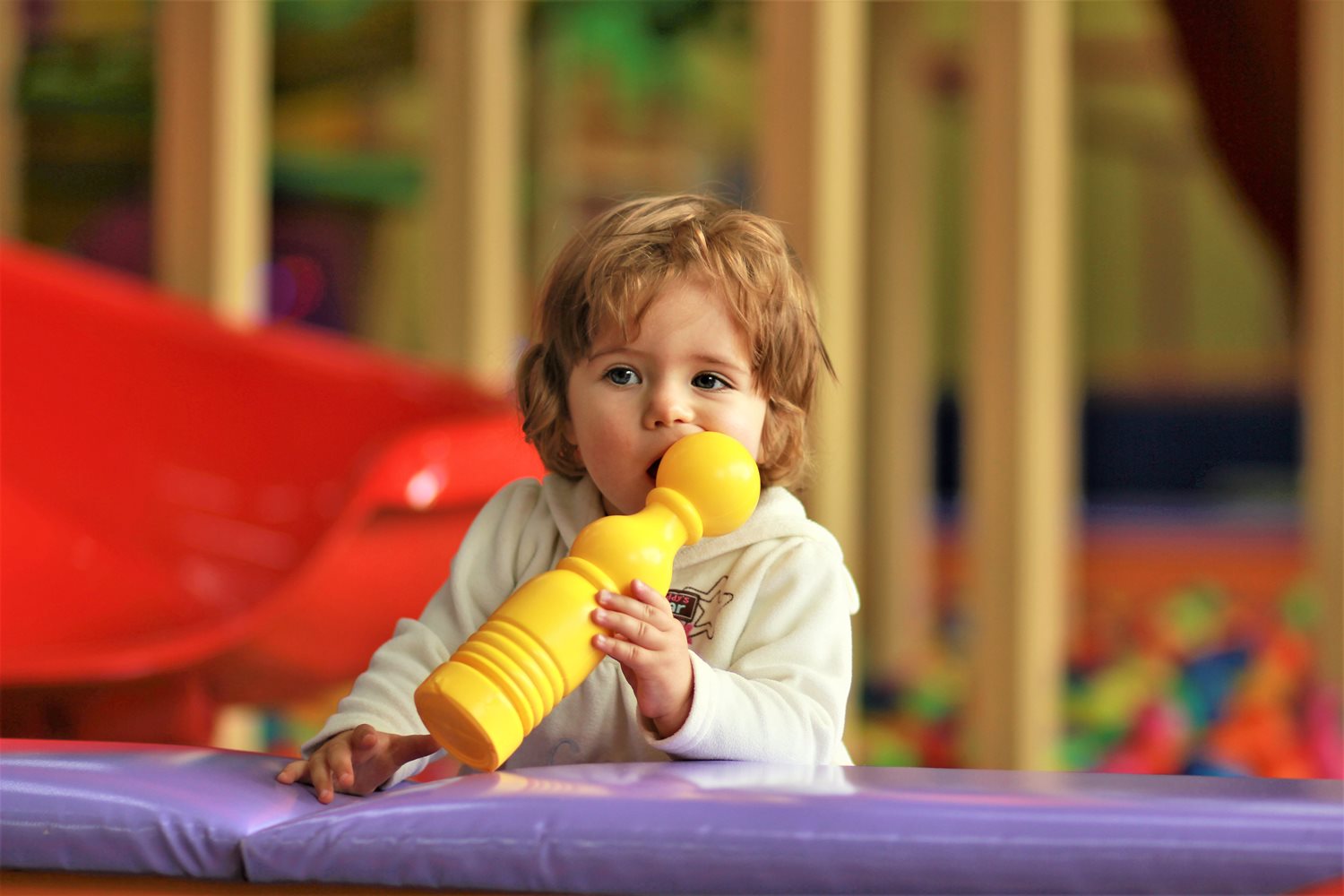Exploring Objects Helps Children Learn About Language

Children’s first words are often the names of objects they can see and touch during their everyday life. Before they learn the names of objects, children first have to learn all about objects by exploring them. This process starts as early as 4 months of age and, by 6 to 9 months, most infants are actively exploring many objects in their environment [1]. By looking at objects, holding them, and exploring them with their hands and mouth, children discover many things, such as [2]:
- Objects have different features (such as their size, texture, shape, whether they make sounds, etc.)
- Some objects are similar and belong to the same category (e.g., things we eat are all foods, things that roll are usually balls, things with wheels are vehicles)
- You can perform different actions with objects (e.g., toy cars can be pushed, balls can be rolled, rattles can be shaken)
What does object exploration have to do with language development?
The amount infants explore objects with their hands is related to their later use of gestures and sounds.
Research has uncovered some interesting connections between the way children explore objects and their language development:
- The same areas of the brain are involved in both language and motor (movement) tasks [2]
- The amount infants explore objects with their hands is related to their later use of gestures and sounds at age 12 months [2]
- The amount infants explore objects with their mouths is related to their later understanding of words at age 12 months [2]
- Parents tend to name objects more often when infants are looking at and holding objects than at other times [3]
- Most of infants’ early words are names of objects that they have access to and can hold and move [4]
It makes sense that exploring objects early on is linked to later communication skills. When children are paying attention to an object and actively exploring it, and then their caregiver says the name of the object at that moment, children receive the right input at exactly the right time [3]. Naming objects during these moments creates the best opportunity for word learning. In the It Takes Two to Talk guidebook, we call this “matching what you say to what’s happening in the moment” [3].
Match what you say to what’s happening in the moment
When you match what you say to what your child is interested in at that exact moment, it helps your child make connections between their interests and the words that describe them. When your child explores an object or toy, it gives you an opportunity to say its name and talk about what your child is doing with the item. Here are some tips to help you do this:
- Observe your child closely – Notice what your child is touching, looking at, or mouthing. These actions will give you clues about your child’s interests, and let you know what to talk about.
- Expose your child to a variety of objects – You can broaden your child’s interest in objects by exposing your child to objects with different features. Your child might be curious about the sound a rattle makes, the way the wheels spin on a toy car, or the soft texture of a fluffy blanket. The more objects your child shows an interest in, the more opportunities you’ll have to talk about those objects.
- Timing is everything! – The best time for a child to learn an object’s name or a word related to the object is when they are looking at and exploring that object. If you name the object or talk about what your child is doing with it at that moment, your child is more likely to connect the word with the object or action. For example, if you say “Bang Bang!” while your child is looking at a drum and banging on it, it’s more likely your child will connect the word “bang” with their action.
- Use the 4 S’s – The 4 S’s help you make new words stand out so that your child will notice them:
- Say less means speaking in shorter (but grammatical) sentences if your child is at the beginning stages of language learning. For example, if your child is holding a ball, you could say "You’ve got the ball!” instead of “You’re playing with the ball we bought at the store yesterday.”
- Stress important words with your voice (e.g., “You’ve got the ball”, exaggerating the word “ball” a little bit)
- Go Slow means not speaking too quickly
- Show your child what the word means by pointing to the object as you say its name (e.g., pointing to the ball as you say the word “ball”)
And don’t forget to repeat often! Your child needs to hear words many times before they understand them and, in time, learn to say them.
By matching what you say to what your child is exploring in the moment, you will create many language-learning opportunities and help build your child’s vocabulary.
Similar articles by tag:
Language Development | Early Vocabulary | 4 S’s | Match What You Say | Object Play
